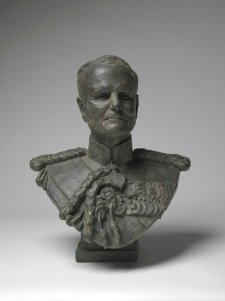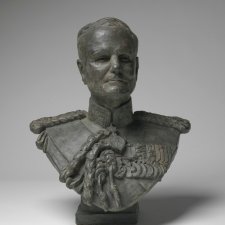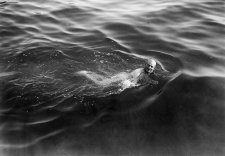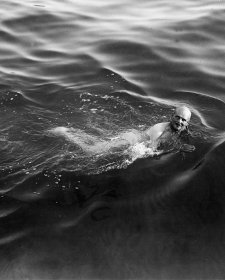William Birdwood KCMG KCSI KCB DSO, 1st Baron Birdwood of Anzac and Totnes (1865-1951) commanded the Australian Corps for much of the First World War. Born in India and educated in England, he trained at Sandhurst before serving on India's north-west frontier. During the Boer War he served on Lord Kitchener's staff; he was awarded the Distinguished Service Order in 1908 and subsequently promoted to major general. When the First World War began, Kitchener put Birdwood in command of the Australian and New Zealand forces bound for Europe. He met them in Egypt at the end of 1914; four months later they landed at Gallipoli. Here Birdwood regularly visited the front lines and took daily swims in the sea in the place he named Anzac Cove. 'His delight was to be out in the field among his men', Charles Bean wrote. Though he saw all attempts on Turkish positions fail, Birdwood was opposed to evacuation; he was overruled, and oversaw the successful withdrawal in December 1915. In early 1916 the ANZAC Corps was split in two. Birdwood accompanied I ANZAC Corps to France, and directed its operations throughout 1916 and 1917; he took command of the Australian Corps when it was formed from the five AIF divisions in November 1917. After John Monash succeeded him in May 1918, Birdwood took command of the British 5th Army, but still retained administrative command of the AIF with the support of almost all senior Australian officers. Despite his having led them through disastrous Western Front actions, not least Bullecourt, Birdwood continued enjoy a level of respect from Australians that was given to few British senior commanders. In 1920 he was made a general in the Australian Military Forces and five years later was made field marshal. He was warmly welcomed on his tour of Australia and New Zealand in 1920. Given command of the Indian Army in 1925, when he retired from the military in 1930 he was thwarted in his ambition to become Australia's Governor-General when the prime minister insisted on an Australian, Isaac Isaacs, for the post.
Temporary road closures will block vehicle access to our building on Sunday 13 April until 3:00pm.










